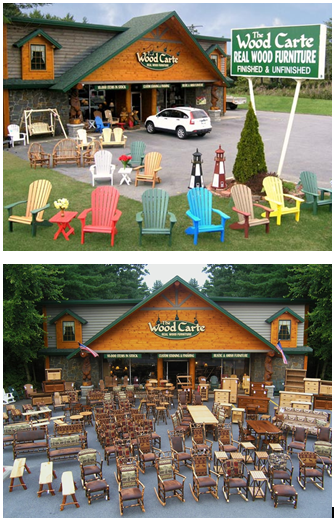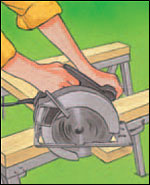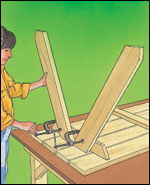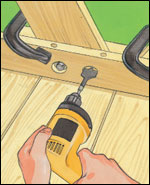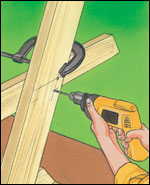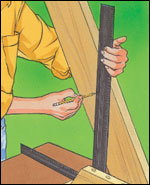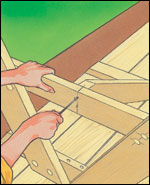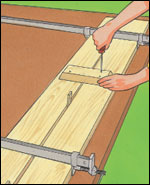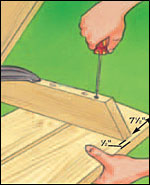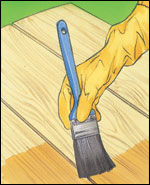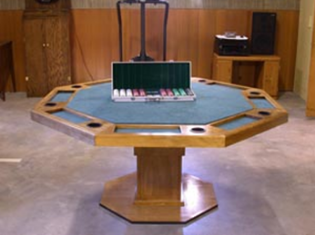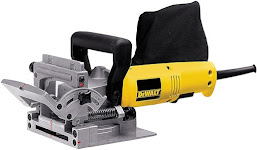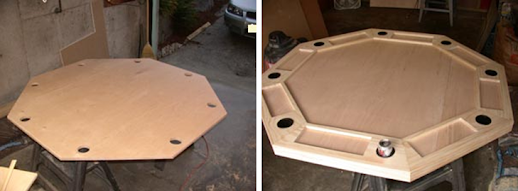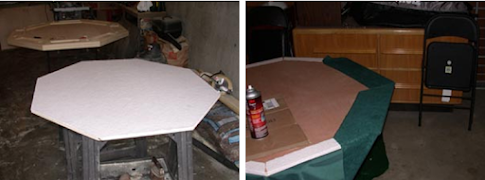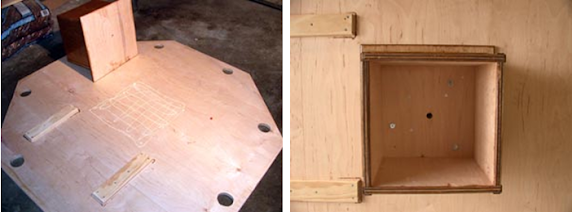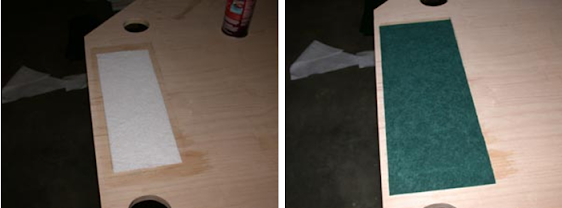In-the-wall bookcases are elegant, but they can be difficult and expensive to construct. We show you an easier way to create a classic piece for any space.
I built my first bookcase in middle school. A multi-tiered assemblage of wooden planks laid across stacks of bricks, it was reminiscent of pieces from the early Flintstone Period--and I was proud to have made it myself. Since that masterpiece, I've built 50 or 60 more, most while working as a cabinetmaker for an interior design firm, where I learned the carpentry skills, design guidelines and construction techniques used in the bookcase shown here. Basically consisting of three plywood boxes fitted with a hardwood face frame, this piece looks built-in because it spans from wall to wall, and is trimmed with molding at the ceiling and floor. I used 3/4-in. birch plywood for the cases, 4/4 sustainably harvested African mahogany for the face frames and 3/4-in. mahogany plywood for the sides surrounding the doorway. With moderate skills and some patience, it wouldn't be hard to make this project fit any space.
On permanent display: mahogany, solid biscuit joints--and a whole lot of class!
Making Choices
Two pieces of plywood form each side of the cases. I separated them with 1/2-in.-thick plywood strips, so that when I attached the 2-in.-wide mahogany stiles, they'd align flush with the plywood sides. (In contrast, the horizontal mahogany apron attached to the front of each shelf overhangs the plywood.)
The shelves fit into dado joints routed into the case sides. Since the shelves were going to be glued and screwed into the dadoes, they couldn't be adjusted later. So I measured my books before I decided how tall the shelves should be. As a rule, a bookcase with shelves between 7 in. and 14 in. apart accommodates most everything. While books generally fit on 8- to 9-in.-deep shelves, I prefer deeper bookcases, so I ripped the plywood to a width of 11 7/8 in.
I chose to attach the wooden face frames--stiles, rails, valance and aprons--to the plywood cases with a biscuit joiner so that fasteners wouldn't mar the mahogany. But the quickest, easiest approach would be to use a pneumatic finishing nailer--then fill the nail holes with putty.
Click here for plans (link opens in new window)
Getting started
The Right Wood
Birch veneer plywood is ideal for building bookcases, and it was affordable at $45 per 4 x 8-ft. sheet. The mahogany was $7 per board foot--and certified by the Forest Stewardship Council.
Start by building a base out of 1x or 2x lumber. Make its depth 1 1/2 to 2 in. less than the depth of the bookcase itself. Its height must be 1/8 in. taller than the baseboard molding you plan to install to make sure the molding slips in easily. Set the base into position and check for level right to left and front to back. Fasten it to the wall studs using 3-in. drywall screws [ 1 ]. Also drive angled screws through the inside of the base and into the floor.
Rip the 3/4-in. plywood to width for the case sides and shelves using a table saw or circular saw and straightedge guide. Crosscut the case sides to length, making them 2 in. shorter than the distance from the top of the base to the ceiling. Then, cut all the shelves to length. The shelves should be no longer than 36 in. to keep them from sagging under heavy loads. Before proceeding, finish all the plywood pieces.
Routing the Dadoes
Clamp two opposing case sides edge-to-edge and mark each dado location with a pencil. Be sure and mark the location of the case tops far enough down on the case sides, so that the tops provide a joining surface for the valance. Next, clamp a straight-edge guide across the two sides. Position the guide square with the plywood edge, install a 3/4-in. straight bit into the router and adjust it to cut 3/8 in. deep. Slowly push the router along the guide, crossing both plywood pieces. If you plan to use biscuits to attach the face pieces, cut the necessary slots with a biscuit joiner [ 2 ]. For the tall sides, space the slots about 12 to 14 in. apart. Cut three slots into shelves that are 18 in. long or less, and four into longer shelves. (I cut slots for No. 20-size biscuits.)
Assembling the Case
Apply carpenter's glue to the dadoes, set the plywood shelves in place and secure them with 1 5/8-in. drywall screws [ 3 ]. Since the bookcase has no back, you need to install a wood strip, or hanging rail, to screw each case to the wall. Cut the rail from a 1 x 3 or 1 x 4 to fit between the two case sides. Position it directly above the case top, and attach it to the case sides with glue and screws.
Set each assembled case on its base [ 4 ] and use a 4-ft. level to check for plumb. Next, secure the cases by driving 3-in. drywall screws through the hanging rails and into the wall studs.
Nail 1/2-in. plywood spacer strips to the case sides [ 5 ]. Use six strips total: two each at the bottom, center and top of the sides. Attach the neighboring case, if there is one. Otherwise, clamp a side panel to the plywood spacers, creating 2-in.-thick case sides.
Attach this panel by driving 1 5/8-in. trim-head screws from the inside [ 6 ].
With the plywood cases installed, cut the mahogany face-frame parts, which include: 2-in.-wide vertical stiles, 3-in.-wide horizontal base rails and valance and 1 1/2-in.-wide aprons that trim the shelves. Before installing each mahogany part, sand it smooth, then apply a finish.
Adding the Face Frame
Start with the horizontal base rail at the bottom of the bookcase. Hold the rail against the bottom shelf and mark onto the rail the center of each slot cut into the shelf. Then use the biscuit joiner to cut corresponding slots into the back of the base rail. Apply carpenter's glue to the front edge of the bottom shelf, and the rear of the base rail. Insert No. 20 biscuits into the shelf slots, then press the rail into place [ 7 ]. Use a rubber mallet to tap the rail tight. Wipe away any excess glue with a cloth. Attach the valance that runs across the top of the bookcase the same way. (Note: Its bottom edge aligns flush with the case top.)
Now install the vertical stiles. Hold each stile against the front edge of the bookcase sides, then transfer the biscuitslot locations from the sides onto the stile. Cut slots using the biscuit joiner, apply glue to both surfaces, insert biscuits into the slots and press the stile home. Use a rubber mallet to tap it tight. Repeat the glue-and-biscuit routine to attach the horizontal mahogany aprons to the shelves. Prior to installation, I routed a decorative profile along the bottom edge of each apron to create shadow lines that accentuate the shelves. The aprons are more than decorative, though. They stiffen the shelf to prevent sagging. Trim the top of the bookcase with crown molding [ 8 ] and the bottom with base molding [ 9 ]. Wait 8 to 10 hours for the glue to cure before filling the shelves.











